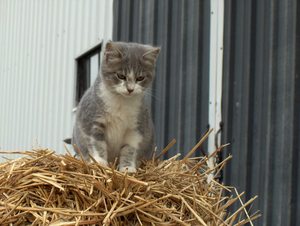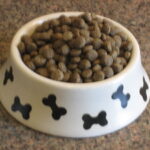Anal glands. It just sounds gross doesn’t it? Most pet owners have never even heard of anal glands until their dog or cat has an issue with them. After that point, many of these pets need regular maintenance of their glands that can actually be done at home!
What are anal glands?
Anal glands are scent glands located at the rear end of the dog and cat. These two glands sit at the 4 and 6 o’clock positions on either side of the anus. Each gland fills with a foul smelling, dark colored substance that is normally excreted when the animal passes stool. In the wild, it’s a tool to mark territory. In the domesticated dog and cat, there is really no use for them.
Some pets end up having trouble expressing the glands on their own. If left unaddressed, the anal glands can become infected and impacted, a very painful and irritating condition.
Are there signs of problems with the glands?
The most common sign of a pet that is having problems with his or her anal glands is scooting. Too often this is associated with parasites or “worms” but more often than not it is due to the anal glands being full. The pet scoots his or her rear on the floor to try and express the glands on their own. Sometimes they are successful, leaving a nice, stinky dark streak on the carpet; sometimes they aren’t.
Other signs include excessive licking, holding the tail down and sensitivity when touched near rear end of the body.
How are anal glands expressed?
There are two ways to get the anal glands expressed; at the veterinary office or on your own at home. All dogs are different; some require care every month while others require the task every few months or so. At the veterinary office, the procedure can be done usually for a minimal fee.
Expressing anal glands at home is not difficult if done as a routine maintenance. Glands that have become abscessed, infected or impacted should be addressed by the veterinarian.
Have a friend restrain your pet. A dog should be allowed to stand while a cat can be allowed to lie down. Cats should be scruffed while dogs should be restrained with one arm around the neck as a big bear hug stabilizing the head and one arm supporting the dog’s weight to keep her standing.
A rubber glove should be worn for this procedure and lubricating jelly should be applied to the gloved index finger. Be sure to have lots of paper towels ready as well as this can be a nasty job.
In the dog, insert the lubricated finger through the anus gently. It will most likely be an uncomfortable feeling for the dog but shouldn’t cause any pain. Feel for the glands at the 4 and 6 o’clock positions. They might feel like anything from a small pea to a grape. Sometimes, they will be slightly higher or lower as well.
With your index finger inside and your thumb on the outside, gently squeeze the gland to express the material outwards. It might take a little bit of pressure to excrete the discharge. Be careful to keep your face out of the line of fire as sometimes the material will come out with a force, squirting on anything in its path. When all the material is expressed, rotate your arm and express the remaining gland.
If this is a cat, be sure to wear a glove. It is not necessary to insert a finger internally. Simply by feeling at the 4 and 6 o’clock positions, you should be able to locate the anal glands. Gently squeeze the glands towards the anus and the material should flow out. Cats typically object to this procedure more than dogs so get ready for some complaining from a moving target.
Once you are all finished, your cat or dog is going to need a wash up. This is a foul smelling job but a necessary one for many animals. If the smallest bit of the material is left on fur, table tops or anywhere else, it will smell worse than almost anything else until it is eliminated.If ever there is the feeling of uneasiness or question of hurting the animal, just call the veterinary office. It’s a fast and easy procedure and one that is commonly presented. They should have no problem getting this done for your pet.
It’s a grueling job, but someone’s got to do it. The pets typically do not enjoy having it done but afterwards they’ll feel much better. Many pets never have to have this done but a lot of others aren’t so lucky. Whether it’s you or your veterinarian who does it, it’s got to be done by someone as many pets are unable to remedy the situation themselves.







